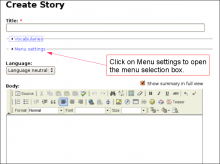
screen
VideoFrame
The VideoFrame tag is used to render one frame. It includes the data of exactly one video frame to be drawn on the screen.
The f_object_id_ref parameter is a reference to a DefineVideoStream.
DefineVideoStream
This tag defines a video stream. To playback the video stream, one needs to add a list of VideoFrame tags.
The f_width and f_height are defined in pixels. This is rather uncommon in SWF so it is to be noted multiple times.
DefineEditText
Additional interactivity has been added in V4.0 of the SWF format. This is given by the use of edit boxes offering the end users a way to enter text as if the SWF movie was in fact an interactive form.
The text is defined in a variable (accessible in action scripts). It can be dynamically assigned and retrieved. It is legal to have an empty string as the variable name (not dynamically accessible).
Since version 8, the text drawn by a DefineEditText tag can be tweaked by adding a CSMTextSettings tag.
The f_edit_word_wrap flag will be set to true (1) in order to have words going beyond the ...
DefineFont2
It is common to use the DefineFont2 tag in order to create an array of shapes later re-used to draw strings of text on the screen. This tag must be used whenever a DefineEditText references a font; and in that case it is suggested you include a full description of the font with layouts.
The array of glyphs must be ordered in ascending order (the smaller glyph number saved first; thus 'a' must be saved before 'b', etc.).
All the characters should be defined in a 1024x1024 square (in pixels) to be drawn with the best possible quality. This square is called the EM square.
The ...
Appendix A — The geometry in SWF — Images
When appropriate, images can also be included in SWF files. All the images can be full color and also have an alpha channel.
Appendix A — The geometry in SWF — Edges
Edges are used to define a shape vector based and also coordinates where images need to be drawn. The edges are always coordinates from where ever your last point was to where ever you want the next point to be (a little like a turtle in LOGO).
Appendix A — The geometry in SWF — Matrix
The coordinates are often transformed with the use of a matrix. The matrix is similar to a transformation matrix in Postscript. It includes a set of scaling factors, rotation angles and translations.
When only the scaling factors are used (no rotation) then these are ratios as one would expect. If a rotation is also applied, then the scaling ratios will be affected accordingly.
Appendix A — The geometry in SWF — Coordinates
The most common and simple geometric information are the object coordinates on the output screen. These are defined in TWIPs. There are 20 twips per pixels. Note that an embedded SWF file can be enlarged and/or reduced thus changing this basic scaling factor. To have exactly 20 twips per pixel you must ensure that the EMBED and/or OBJECT tags use a WIDTH and HEIGHT with exactly the same value as in the rectangle defined in the SWF header file divided by 20.
PlaceObject2
This tag will be used to specify where and how to place an object in the next frame. The PlaceObject is much different and is presented separately.
The f_depth field is used to indicate at which depth the character is inserted in the current frame. There can be only one object per depth value (thus a maximum of 65536 objects can appear on a single frame).
The f_place_has_move and f_place_has_id_ref flags are used to indicate what to do at the given depth. The following table presents what happens depending on the current value.
f_place_has_move ...

